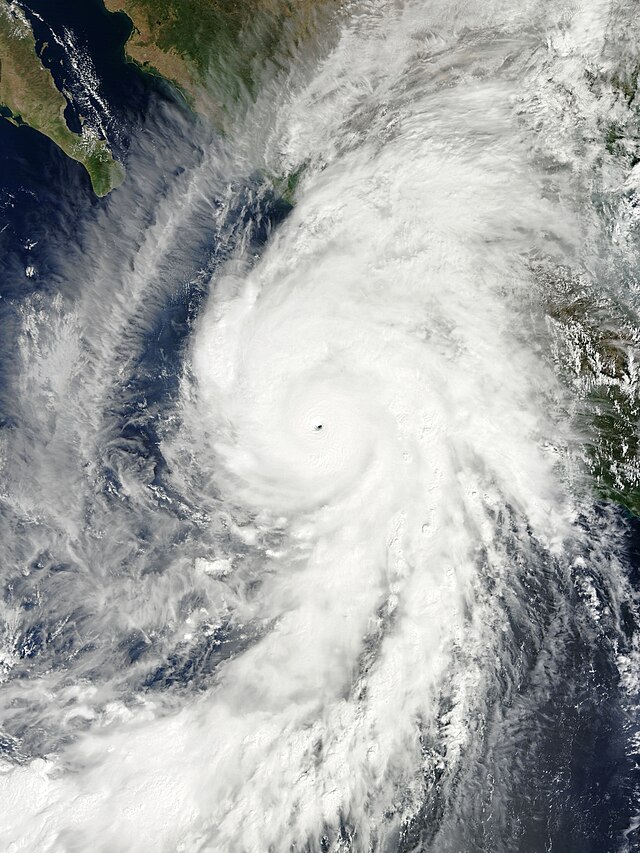Top Qs
Timeline
Chat
Perspective
Pressure-wind relationship calculations for tropical cyclones
From Wikipedia, the free encyclopedia
Remove ads
There are several different methods to derive pressure from wind speed and vice versa in tropical cyclones. Both information minimum pressure and wind speed have their utilities. Wind speed can describe the destructive potential of a tropical cyclone.[1]

Method
A tropical cyclone's maximum sustained wind and minimum central air pressure are interlinked and can be used to describe a tropical cyclone's intensity.[2][3] While the maximum winds are more closely related to the destructive potential of a tropical cyclone, it is harder to reliably measure.[1] These winds can be estimated from both the radius of maximum winds and the pressure gradient, but this gradient is also difficult to measure. Over water, reconnaissance flights can sample a tropical cyclone's central pressure,[4] and reliable pressure observations over land from within the eye are more likely to be retrieved than wind observations from the eyewall.[5] According to Christopher Burt from Weather Underground, the most reliable method of estimating pressure from wind involves using the Dvorak technique with an image, which shows how cold cloud tops are.[6] Joe Courtney and John Knaff noted that as several models are based on Atlantic data, leading to biases in other parts of the world.[7] Most pressure-wind models are in the form of:[8]
where is the maximum wind speed, is the change in pressure from an external point to the center, and and are constants.[8] Ted Fujita was the first to modify the exponent; before then, it mostly stood at 0.5.[8] The efficacy of wind–pressure relationships is affected by other factors such as the storm's latitude and size, as well as the local atmospheric environment.[9]
Remove ads
Models
Summarize
Perspective
This section needs expansion. You can help by adding to it. (January 2025) |
Knaff-Zehr
Knaff and Zehr (2007) came up with the following formula to relate wind and pressure, taking into account movement, size, and latitude:[10]
Where Vsrm is the max wind speed corrected for storm speed, phi is the latitude, and S is the size parameter.[10] S is more specifically defined as the ratio of tangential wind at a radius of 500 kilometres (310 mi) to its value under a Rankine vortex model.[11]
Holland
In 2008, Greg Holland published his model to the Monthly Weather Review.[8] The Holland model is able to characterize the pressure profile of a tropical cyclone with accuracy.[12]
Knaff-Zehr-Courtney
Joe Courtney and John A. Knaff published in 2009 a correction to the previous Knaff-Zehr model. They noted that the Knaff-Zehr model had issues with calculating for storms at low latitudes. The equation derived is:[7]
(for )
(for )
Remove ads
Usage
The interchangeability of pressure and wind allows for the two to be used to give equivalencies for the public.[3] Pressure-wind relations can be used when information is incomplete, in situations where forecasters must rely on the Dvorak technique.[11]
Some storms may have particularly high or low pressures that do not match with their wind speed. For example, Hurricane Sandy had a lower pressure than expected with its associated peak wind speed.[3]
See also
References
Wikiwand - on
Seamless Wikipedia browsing. On steroids.
Remove ads










